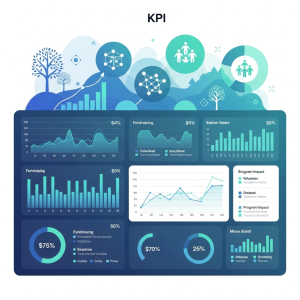In today’s educational landscape, achieving students’ success is more crucial than ever. Education Tech Companies like Datatelligent, specialize in helping universities manage their data to improve student outcomes. By using advanced technology, we enable institutions to streamline operations, boost academic performance, and make informed decisions that lead to greater student success.
The Role of Education Tech Companies in Students Success
Education tech companies like Datatelligent provide innovative solutions to improve students’ success. Let’s explore how we contribute to this goal.
What is Student Success?
Students success means helping students achieve their academic goals, personal growth, and career readiness. It involves giving students the resources and support they need to thrive in their studies and future careers.
Why is Students Success Important?
Focusing on students success benefits both students and universities. It leads to higher graduation rates, better job placements, and a positive reputation for the institution. Effective data management plays a crucial role in achieving these outcomes.
How Datatelligent Supports Students Success
Partnering with Datatelligent offers numerous advantages for universities aiming to enhance students success. Here’s how we help:
Improved Data Accuracy
Accurate data is essential for tracking student progress and identifying areas where support is needed. Our automated data management systems reduce human error, ensuring reliable data that universities can trust.
Enhanced Decision-Making
Our advanced analytics tools provide actionable insights. Universities can make informed decisions based on real-time data, whether it’s adjusting academic programs, improving student services, or identifying at-risk students.
Increased Efficiency
Universities handle numerous administrative tasks that can divert attention from student support. By automating routine tasks and streamlining processes, we help universities save time and resources. This allows staff to focus more on initiatives that directly impact students success.
Targeted Support and Interventions
Data-driven insights help universities identify at-risk students and tailor support programs to their needs. By understanding the data, universities can provide targeted interventions, ensuring that every student has the opportunity to succeed.
Datatelligent: Your Partner in Achieving Students Success
At Datatelligent, we are committed to helping universities harness the power of their data to promote students’ success. Our tailored solutions address the unique needs of each institution. Here’s what we offer:
Data Integration and Management
We integrate various data sources to create a unified, accessible data platform. This ensures all your data is in one place, easy to access and manage.
Advanced Analytics
Our predictive analytics tools provide actionable insights. By analyzing historical data and identifying trends, we help universities plan for the future and make data-driven decisions that enhance students’ success.
Data Security
Ensuring that all data is securely stored and compliant with regulatory standards is a top priority. We implement robust security measures to protect sensitive information and ensure compliance with regulations.
Tailored Solutions
Every university is unique, and so are their data needs. We work closely with each institution to understand their specific challenges and provide customized solutions. Whether it’s improving data accuracy, enhancing decision-making, or increasing efficiency, we have the expertise and technology to help.
Success Stories: How Datatelligent Has Made a Difference
University A
University A struggled with managing student records and tracking academic performance. By partnering with Datatelligent, they integrated their data sources, automated data management processes, and gained valuable insights into student performance. This led to more targeted support for students and improved academic outcomes.
University B
University B faced challenges with providing targeted support to at-risk students. Our advanced analytics tools provided the data they needed to identify at-risk students and develop intervention programs. This resulted in higher retention rates and better student outcomes.
University C
University C needed to enhance their career readiness programs. By providing robust data sets and advanced analytics tools, we helped them track student progress and align their programs with job market demands. This improved job placement rates and student satisfaction.
Conclusion
As the education sector continues to evolve, partnering with education tech companies like Datatelligent can make a significant difference in achieving student succes. By improving data accuracy, enhancing decision-making, increasing efficiency, and promoting better student outcomes, Datatelligent is your ideal partner in fostering students success.
Let us help you unlock the full potential of your university’s data to achieve greater performance and success. Contact Datatelligent today to learn more about how we can support your institution in promoting students success and navigating the complexities of data management and academic planning.












